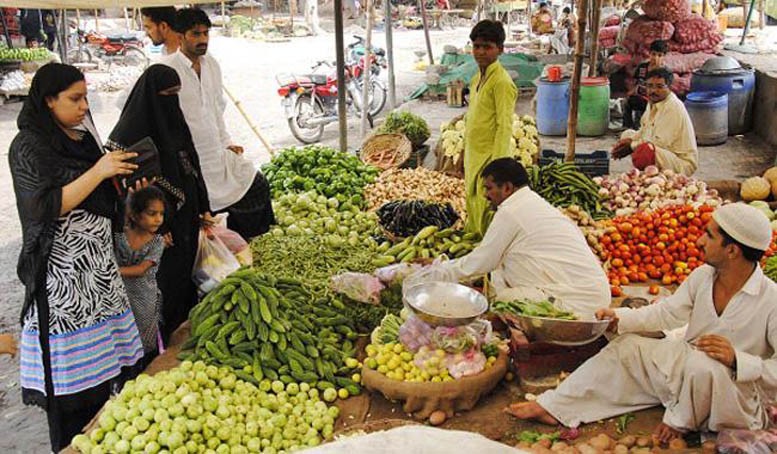
For the bourgeois and the patricians of Pakistan, their reaction to inflation is as different as is their lifestyle

"What has hit me and my family most is the price of milk and sugar going up in the last two years," says Zainab Bibi who hails from Mailsi district in South of Punjab. She and her husband moved to Karachi a few years ago in search of a better standard of living. But for Zainab, an avid tea drinker whose staple diet continues to be chaai paratha, it is not easy surviving in Karachi as items that make up her sticky sweet tea are pricier than in her village. "One reason I came here is that I want to save enough to build two rooms in my village, my own home. But the price per 1000 red bricks has risen from Rs5000 to Rs8000 within two years."
In contrast to Zainab’s economic challenges, the challenge of Samiya Khan (name changed), a resident of the uptown Defence area in Karachi is different. "You are asking the wrong person. I honestly have not felt the pinch as my husband just gives me his card; I go to the supermarket and swipe it to pay without even checking the prices minutely. But if at all, I would say the prices of imported food items have gone up. The chocolate spread my children love eating and I use for baking cupcakes has gone up from Rs280 to Rs450. However, I don’t think prices have gone up that much. Have they?" she says.
Prices of consumer goods, utilities and luxury items going up is never taken lightly. But which prices affect which strata of society is the key to understanding how closely linked income inequality and inflation are.
Pakistan’s annual inflation rate rose to 7.2 percent in January of 2019 from 6.17 percent in the previous month. It was the highest inflation rate since September of 2014, as shared by Trading Economics. According to the State Bank of Pakistan’s website, Headline CPI (Consumer Price Index) inflation (2007-08=100) was recorded at a level of 6.2 percent on year-on-year basis in December 2018 as compared to 4.6 percent during corresponding month of last year.
According to data shared by Pakistan Bureau of Statistics (PBS), January 2019 saw an increase in prices of items like sugar, fresh fruits, pulses and tomatoes, but also saw a decrease in the prices of chicken (by 18.06 percent), eggs, onions and potatoes.
But for Zainab Bibi, all this does not translate into a major change, and the one underlying take home message she has in her mind is simple -- A good life in Naya Pakistan is as unaffordable as purana Pakistan, even though fuel prices have gone down although electricity prices have gone up if compared between December 2018 and January 2019.
For the bourgeois and the patricians of Pakistan, their reaction to inflation is as different as is their lifestyle when compared to the struggling lower middle class or the yet lower strata on the economic ladder. When asked which household needs had taken a dent due to inflation in Pakistan, the elite is often found themselves confused between needs and wants, and often complain of how luxury spending has been affected.
Over lavish high-teas, the conversations often include how the price of air travel has gone up, and vacations are becoming pricier. Delve deeper and the falling rate of the Pak rupee has affected how they will pay the fee of their children studying abroad in dollars and pounds. "I am very happy actually; my children’s school fee has been considerably reduced since the new government came in," says a young mother whose two children are students at an upper tier school in Karachi.
What varies is the pinch someone feels when prices go up, depending on affordability. The theory of relativity may then not be applicable only to laws of physics, neutrons and black holes. How every Pakistani experiences inflation is in relation with how much they can afford, their spending habits, and their bank statement, if they have a bank account, that is.
Yet one strata feeling the hit of inflation does spill over to the other strata as well. When a darzi (tailor) increases the rate of a female shalwar kameez, the pinch is felt by all, but few join the dots that the cost of commute of the tailor and his assistants has gone up because petrol is pricey. The ticket for a bus traveller, the fare for a rikshaw commuter, or the cost of fuel for someone who goes on a motorbike -- all go up. Consequently, so do the prices of general household items.
Also read: Editorial
It is not that the well-off people do not get impacted by inflation. The price of fuel affects the prices of water tankers for the upper tier. When this happens, their lush lawns become comparatively parched, they stop washing their car porches frequently, and they opt for ‘made in Pakistan’ semi-automatic washing machines to save water. If fuel is pricier, one thinks twice before opting for the generator during long sultry hours of load shedding, and opts for the UPS. And if electricity rates climb up, the use of air conditioners has to be well thought-out. Last if not the least, climbing rates of gas means affluent Pakistanis are actually considering opting for smaller water-heater geysers that can be easily put on and off as and when needed.
But for those who have to start worrying about the prices of potatoes and ghee, and have far too many mouths to feed but way too less earning hands, inflation is a bad word. It is time those on top of the food chain let some resources trickle down to make life easier for all. We may not be able to reduce inflation, but maybe we can somewhat reduce the widening economic inequality.